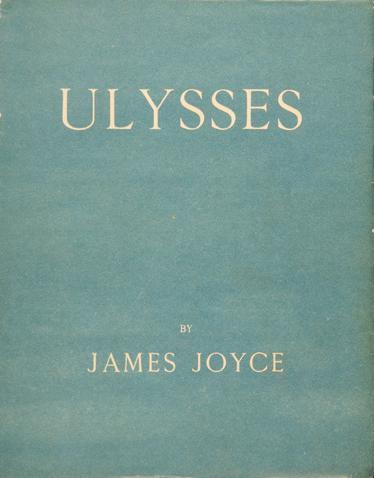Bloomsday, 1904
Today we call it Bloomsday. June 16th is the date that the events happened that make up the narrative of the novel Ulysses by James Joyce.Ulysses is the story of one day in the life of Leopold Bloom. It is set on June 16th, 1904, an ordinary day in many respects. The date was special to James Joyce because it was the day he began his relationship with Nora Barnacle, who eventually became his wife.
Today the novel is considered one of the most important novels ever written, but it started out in a sea of controversy. Ulysses had been published in serial form in The Little Review, an American journal, during the years 1918-1920. After the publication of Episode 13, "Nausicaa", however, the New York Society for the Suppression of Vice took the book to trial. "Nausicaa" contains a passage that deals with the main character masturbating. The book was found obscene by the court, and publication was banned in the United States. (In the United Kingdom, the novel had also been serialized, and publication of the novel as a whole had also been banned.)
Meanwhile, Random House had acquired the rights to publish Ulysses. They arranged for a test case: a single copy of the book was to be imported from France. The plan was that the U.S. Customs Service would confiscate the book, and that the U.S. Attorney would bring an action that would result in the book being destroyed for obscenity. Random House wanted to fight that battle, rather than attempting to publish the work and being prosecuted for it.
 |
| James Joyce in 1918 |
The next battle was to get the matter prosecuted. The U.S. Attorney took seven months to decide whether or not he wanted to proceed. The Assistant Attorney in charge of the case actually believed that the work was a masterpiece, but, after deliberation, decided that it met the legal standards for obscenity. The case was prosecuted.
The case was tried in the U.S. District Court in New York City and was called United States v. One Book called Ulysses by James Joyce. What was particularly interesting about it was that it was not a prosecution of the author or the publisher, or even the importer, but of the book itself.
Random House, as a claimant and intervenor, asked that the case be dismissed, on the basis that the book was not obscene and that its prohibition was a violation of the First Amendment.
 |
| Illustration of Bloom from Joyce's notes. |
It could still have been ruled obscene, regardless of the intentions of the author if it had "tend[ed] to stir the sex impulses or to lead to sexually impure or lustful thoughts." Woolsey found that the book did not do so, when considered as a whole.
The decision was appealed to the U.S. Court of Appeals for the Second Circuit. There, by a vote of two to one, Woolsey's decision was upheld. Judges Learned Hand and Augustus N. Hand (cousins) held the majority decision, and Chief Judge Martin Manton dissented. The case was important because it established the precedent that the obscenity of a work of literature could not be established by excerpts of the work, but rather, that it must be considered as a whole.
Byron Reads Fantasmagoriana To His Guests, 1816
.jpg/687px-George_Gordon_Byron%2C_6th_Baron_Byron_by_Richard_Westall_(2).jpg) |
| Lord Byron |
1816 is sometimes known as "The Year Without a Summer" or "Eighteen Hundred and Froze to Death." There were abnormally cold temperatures, probably caused by unusually low sun activity combined with unusually active volcanic activity. All over the northern hemisphere, crops suffered. In the British Isles, this translated as exceptionally rainy weather, and in Ireland, Wales, and much of Germany there was famine. It was a very bad year.
At Lake Geneva, however, the chief complaint of the literary crowd was that it was too rainy and dreary for much outdoor activity. Consequently, that June they amused themselves for a few days by reading fantastical stories, primarily from Fantasmagoriana, a French translation of a German collection of ghost tales.
 |
| Polidori really liked Byron's tale. |

No comments:
Post a Comment